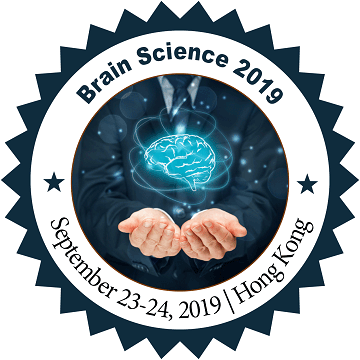M. Bronan
University of Bristol Medical School in collaboration with the Centre of Applied Autism Research (CAAR) at the Univeristy of Bath, England
Title: The use of social stories as an intervention for autism, a state-of-the-art systematic review and qualitative data analysis, with consideration of the efficacy of digital technologies in interventions for autistic children.
Biography
Biography: M. Bronan
Abstract
Background and Aims:
Autism is a complex neurobehavioural disorder, characterised by impairments in the development of language and communication skills. The burden of disease is high, with over 62 million cases worldwide. The study involved a state-of-art systematic review, in addition to qualitative data analysis, to establish the evidence for social stories as an intervention strategy for autistic children. An up-to-date review of the use of digital technologies in the delivery of interventions to autistic children was also carried out; to propose the efficacy of digital technologies and the use of social stories to improve intervention outcomes for autistic children.
Methods:
Two student researchers reviewed a range of randomised control trials, and observational studies. The aim of the review was to establish if there was adequate evidence to justify recommending social stories to autistic patients. Students devised their own search strategies to be used across a range of search engines, including Ovid-Medline, Google Scholar and PubMed. Students then critically appraised the generated literature. Additionally, qualitative data obtain from a comprehensive online questionnaire on social stories was also thematically analysed. The thematic analysis was carried out independently by each researcher, using a ‘bottom-up’ approach, meaning contributors read and analysed responses to questions and devised semantic themes from reading the responses to a given question. The researchers then placed each response into a semantic theme or sub-theme. The students then joined to discuss the merging of their theme headings. The Inter-rater reliability (IRR) was calculated before and after theme headings were merged, giving IRR for pre- and post-discussion. Lastly, the thematic analysis was assessed by a third researcher.
Results:
A review of the literature, as well as thematic analysis of qualitative data found supporting evidence for social story use. The thematic analysis uncovered some novel and very interesting themes from the questionnaire responses, relating to the reasons why social stories were used and the factors influencing its effectiveness in each case. However, overall the evidence for digital technologies interventions was limited and the literature could not prove a causal link between better intervention outcomes for autistic children and the use of technologies. However, they did offer valid proposed theories for the suitability of digital technologies for autistic children.
Conclusions:
Overall the review concluded that there was adequate evidence to justify advising the use of social stories with autistic children. The role of digital technologies is clearly a fast-emerging field and appears to be a promising method of intervention for autistic children; however, it should not yet be considered an evidence-based approach.

